
Artemi Panarin, Jeff Skinner, Joe Pavelski, Matt Duchene, Kevin Hayes and Erik Karlsson all have more than just their status as high-priced, high-profile free agents in common. They will all NOT be members of the 2019-20 Anaheim Ducks when the season begins. While fans might want general manager Bob Murray to make a major splash in free agency, his track record dictates that he will not sign those coveted players this offseason either.
Not only has he not signed big names in the past, doing so this offseason would be careless on Murray’s part. With that in mind, there are some cheaper options that Murray tends to like that can enhance the Ducks’ roster next season.
Murray’s History Says No Big Signing
During his time as Ducks’ GM, Murray has established a reputation of adding depth rather than stars. His most significant free agent signings have been Saku Koivu in 2009, Chris Stewart in 2015 and Antoine Vermette in 2016.
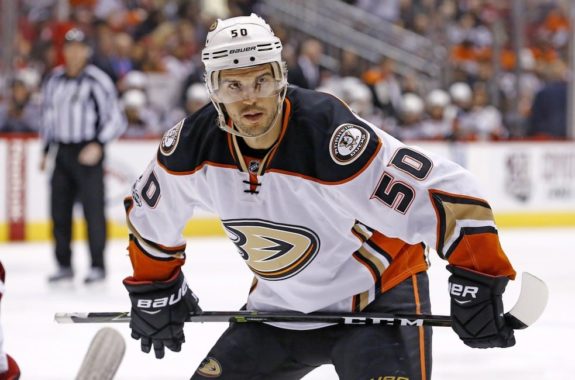
Of all three players, Vermette commanded the highest cap hit at $3.75 million after scoring 17 goals and adding 21 assists the previous season for the Arizona Coyotes. The next priciest contract went to Koivu at $3 million per year after a 16-goal, 34-assist season for the Montreal Canadiens. Finally, Stewart signed for a cap hit of $1.7 million following a 14-goal, 22-assist season for the Minnesota Wild and Buffalo Sabres.
Even Murray’s more significant signings have been in the bargain section of free agency.
Many Factors in Play for Ducks This Offseason
Still,
the Ducks aren’t in a position to make a big splash this season considering all
of the factors still undecided going into next season. They currently have more
than $68.1 million tied up in 16 players. That does not include Ondrej Kase’s $2.6
million contract once he comes off LTIR or whoever will backup John Gibson,
whether it’s Ryan Miller or not.
There’s also the question of what will become of Ryan Kesler and Patrick Eaves, which Eric Stephens of The Athletic highlighted in March that if both players elect not to retire and leave money on the table, the Ducks could put them on long-term injured reserve.
“Murray has always expressed concern over putting players on LTIR as their salaries have to be accounted for when they return to action. But if either Kesler or Eaves physically can’t, then that is a worry they won’t have to consider. Teams are still cutting checks for players such as Dave Bolland, David Clarkson, Marian Gaborik and Nathan Horton, who are effectively done.” (from Ryan Kesler, Patrick Eaves and the retirement question’ – The Athletic NHL – 3/22/19).
He
continues,
“And the Ducks would certainly like to avoid the prospect of a buyout. For instance, Eaves would be paid $2 million over two seasons and Anaheim would have a cap hit of $1.15 million for 2019-20 and $1 million for 2020-21 instead of the $3.15 million that’s in place for next season. Kesler is a much bigger deal, of course. His cap hit could fall from $6.875 million to $2.425 million for three years and $2.225 million for another three on top of that. (Hat tip to the good folks at CapFriendly.com.)” (from Ryan Kesler, Patrick Eaves and the retirement question’ – The Athletic NHL – 3/22/19).
On
top of that, there’s the salary cap that, according to Gary Bettman,
should go up to roughly $83 million from $79.5 million.
However, with Corey Perry and Ryan Getzlaf still owed more than $17 million combined for the next two seasons, signing a premier free agent would restrict the Ducks in the upcoming years, especially when you consider who they might have to pay in the future.
There are a lot of balls up in the air and that will be the case for more than just this offseason.
Ducks Must Consider the Next Ones
Troy Terry and Kiefer Sherwood will both be due new contracts before Getzlaf and Perry reach free agency. If Terry reaches the potential he’s shown so far, he will likely be due for a considerable raise. Sherwood’s ability to give the Ducks depth on the third or fourth line won’t be too cheap either.
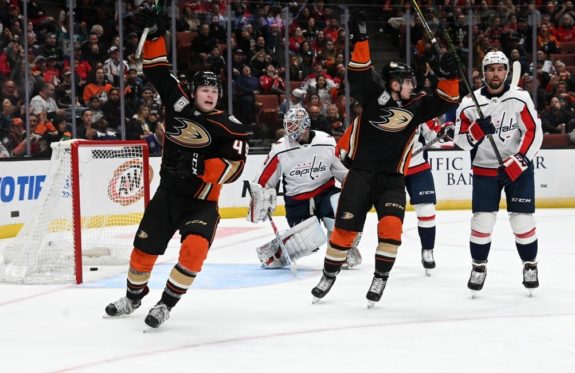
Big name free agents like Hayes, Panarin, Karlsson, you name the player, will command a minimum of $6 million per year at the very least for a minimum of at least four years, and probably more.
If the Ducks sign one of those free agents, that will mean less money that can go to Terry and Sherwood.
They also have Sam Steel, Max Comtois, Isac Lundestrom and Max Jones to consider in 2021-22. Again, it’s still too early to know how good each player will be after two more seasons, but they’ve all shown potential.
Ducks Are Developing Depth
With
the Ducks no longer in position to contend for a Stanley Cup and likely on the
playoff bubble next season at best, they need to continue to develop their
young players.
The Ducks are already well-stocked at both wings. On the left side, Comtois and Jones will battle for roster spots to join Rickard Rakell, Kase and Nick Ritchie. Don’t forget about Devon Shore on the left wing either.
On
the right wing, Terry and Sherwood will have strong cases to make the roster to
join Perry and Jakob Silfverberg on the right side.
Both wing positions are crowded and will already have stiff competition for young players who need time in at the NHL to develop like Comtois, Terry, Jones and Sherwood. Signing a big-name winger like Panarin, Skinner or even Jordan Eberle would take minutes away from young developing players who could be the next group of home-grown — and cheap for the next two to three years — players to make the Ducks contenders.
Positions to Fill on the Pond
The Ducks could use some help at center and right-shot defenseman. Steel and Henrique are good but Getzlaf is slowing down season by season, and Kesler will never be the same player if he does play again.
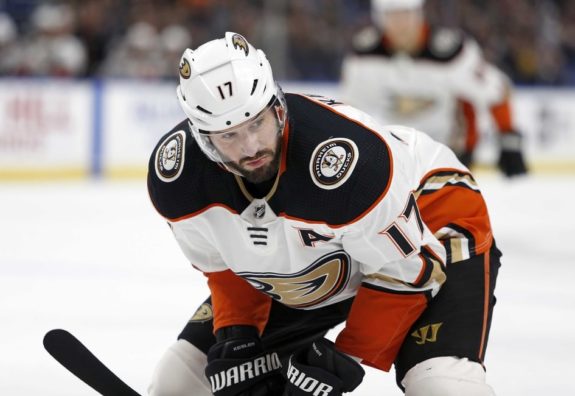
Carter
Rowney was good in his role as a fourth liner last season and his ability to
play both center and wing gave the Ducks some flexibility to move him around
the lineup, but he doesn’t possess the high-end skill to fill in effectively for
an injured top-six forward.
With that in mind, center is the most likely position for a significant upgrade, but once again, cost comes into play. Adding a first-line center like Duchene or Hayes means the Ducks would have to put Getzlaf, Steel or Henrique on the fourth line. That would restrict the production of playmakers like Getzlaf or Steel, not to mention you wouldn’t put an $8.25 million center on the fourth line.
At defense, the Ducks could use another right-shot defenseman, but once again, adding a high-priced defenseman like Karlsson, Tyler Myers or Jacob Trouba would be adding yet another $4-million plus defenseman to a group that already has three.
Once again, cheaper players are the better option at center and defense, so who could the Ducks sign?
Ducks Discount Solutions
Tyler Ennis
While
the Ducks’ bread and butter has long been physical hockey with talented centers
and a good all-around defensive corps, the NHL has changed and left the Ducks
behind. As Murray admitted leading into last season, Anaheim is trying to adopt
the faster, more offensively skilled game that the NHL has trended toward.
Tyler Ennis would fit that mold. Ennis is slated to turn 30 at the start of the season, so he’s not “old” yet. He’s also cheap, carrying a cap hit this season of $650,000 and is coming off his best goal-scoring season and second-best point-producing season (12 goals and six assists) since 2014-15. He will be owed a raise, but his injury issues — he was limited to 51 games this regular season and hasn’t played more than 75 games since 2014-15 — will keep his price down.
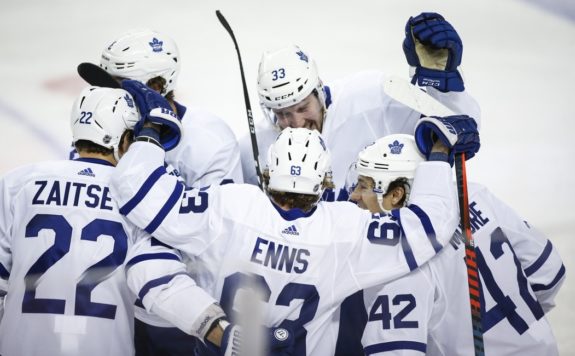
Even
a 100 percent raise for Ennis wouldn’t break the bank.
Ennis
increases Anaheim’s flexibility with the ability to play both wings and center
and possesses the skill and speed to play on any line if needed.
The
best part of that flexibility is that Ennis can push young players like Steel
at center, without carrying the price tag and expectations of a high-priced
free agent.
Ennis has the speed and individual skill that can help transition the Ducks to the new NHL.
His offensive production (albeit with a much better offensive team) this season was better than every Ducks center besides Getzlaf and Adam Henrique.
His resurgent season for the Toronto Maple Leafs earned him their nomination for the Bill Masterson Trophy for perseverance, sportsmanship and dedication to hockey. Though Ennis isn’t known for his defensive ability or physicality, it’s time for the Ducks, as one of the league’s worst offensive teams, to focus on offensive skill throughout their lineup.
Jordan Weal
With a cap hit of $1.75 million and due a raise after tying his career-best for goals, assists and points, Jordan Weal will command a higher price than Ennis, but still not an unreasonable one. He’s younger, bigger and suffered fewer injuries than Ennis. Although he recently said he’d like to return to the Canadiens, what a player says isn’t always what he does, and the draw of living in Southern California rarely ever works against the Ducks.
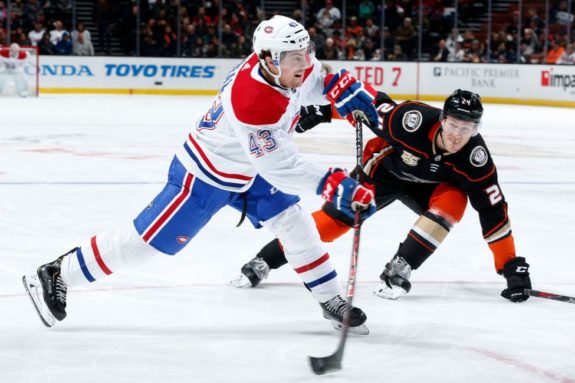
Weal is a shifty, cerebral player who helped Montreal increase their depth, possessing skill and defensive reliability. In 2015, Los Angeles Kings director of amateur scouting Mark Yannetti, the man who played a role in drafting Weal, told Fluto Shinzawa of the Boston Globe:
“He’s an elite thinker,” Yannetti said. “The way he sorts the game, his creativity, the way he reads and recognizes space with and without the puck. His mind allowed him to deal with spatial things in a way that helps compensate for size.” (from ‘Unlike Bruins, Kings stay the course’ – The Boston Globe – 6/28/15).
Weal is another flexible player who would greatly enhance the Ducks
skill and potential offensive potency playing on any line. In a bottom-six
role, he’d make the Ducks move away from a dump and chase philosophy and help
them possess the puck and create plays moving into the offensive zone.
He’d also fit in well for an injured top-six center or help push a player like Steel if Steel struggles with a full-time NHL role.
Dan Girardi
Coming off a contract with a cap hit of $3 million, even Dan Girardi would be on the expensive side for Murray. Girardi’s offensive production from the blueline has been relatively consistent over the past four seasons, so his price tag isn’t likely to drop by that much. However, Girardi is aging and missed a month at the end of the 2018-19 season with a lower-body injury, which may help the Ducks save some money if they sign him.
The Ducks are in need of another right-shot defenseman, even if Girardi is no longer the offensive producer he once was in with the New York Rangers, his presence would help Anaheim. Girardi still plays significant penalty kill minutes, and the Ducks could use an upgrade to their penalty kill, which ranked No. 20 in the league at just under 80 percent effectiveness.
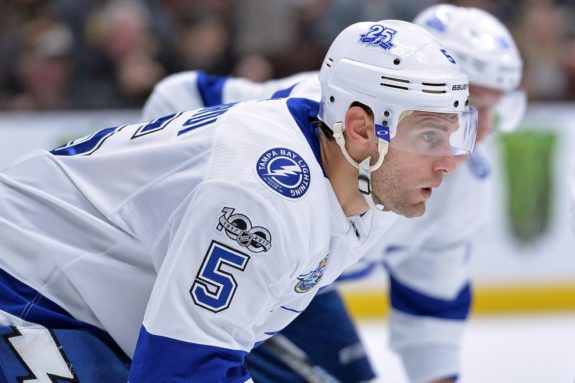
Girardi could slot in on the right side as a second pairing defenseman who could fill in on the first pairing if the Ducks suffer more injury problems. He’s a more dependable option than Luke Schenn or Andrej Sustr were this season, and he’s better than Korbinian Holzer, Andy Wellinski or Jake Dotchin on the right side, who are all also entering either restricted or unrestricted free agency.
The Ducks and their fans hope this season was rock bottom for a team and a fanbase used to winning. Like the draft, free agency after their first non-playoff season since 2011-12 will be new territory for Anaheim. However, if fans are expecting Murray to sign a player who will really create buzz at the Honda Center, they’re likely to be disappointed again, but that doesn’t mean there aren’t some lower-budget free agents who can help the team more than last season’s signings did.
All stats and contract information from hockey-reference.com and capfriendly.com